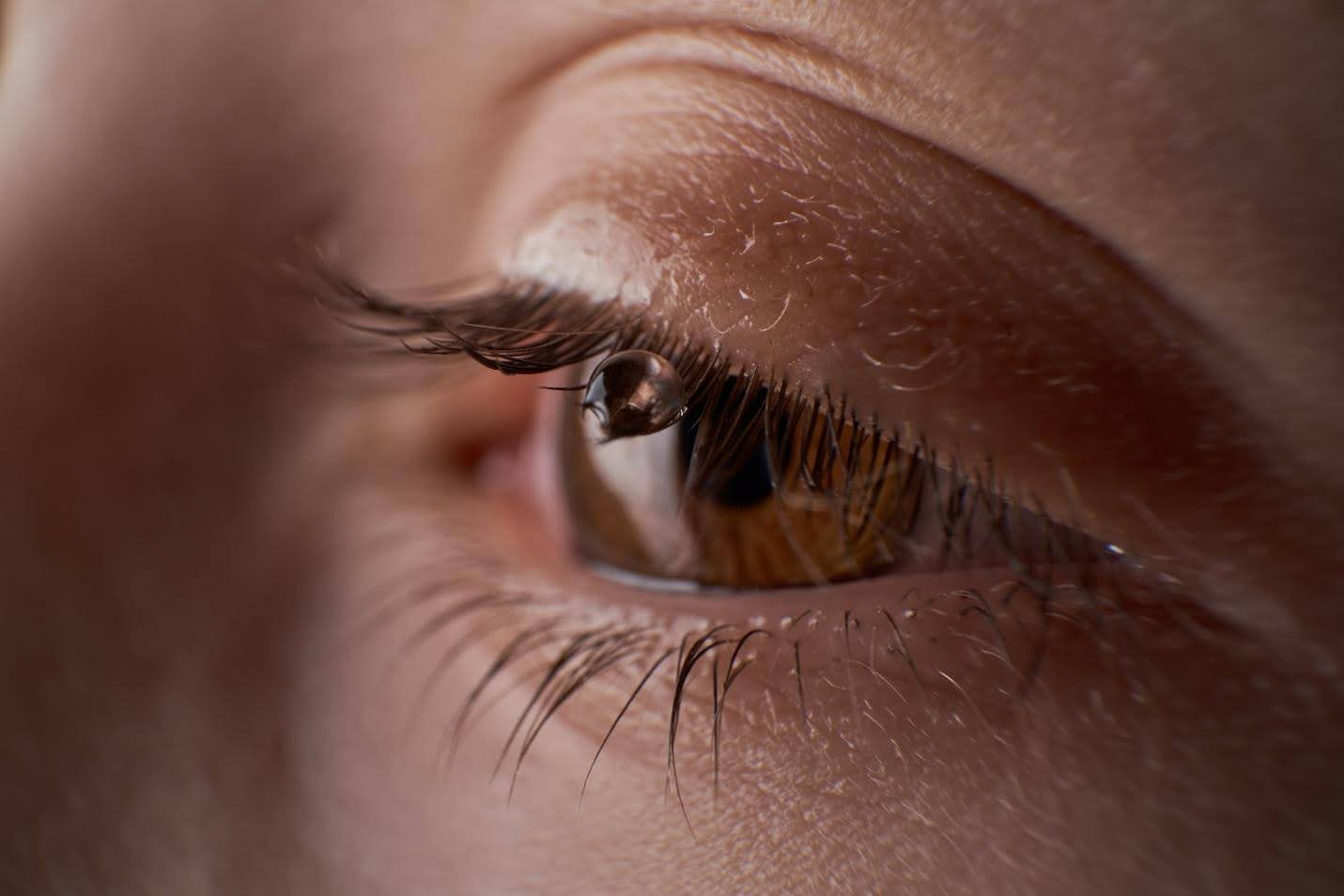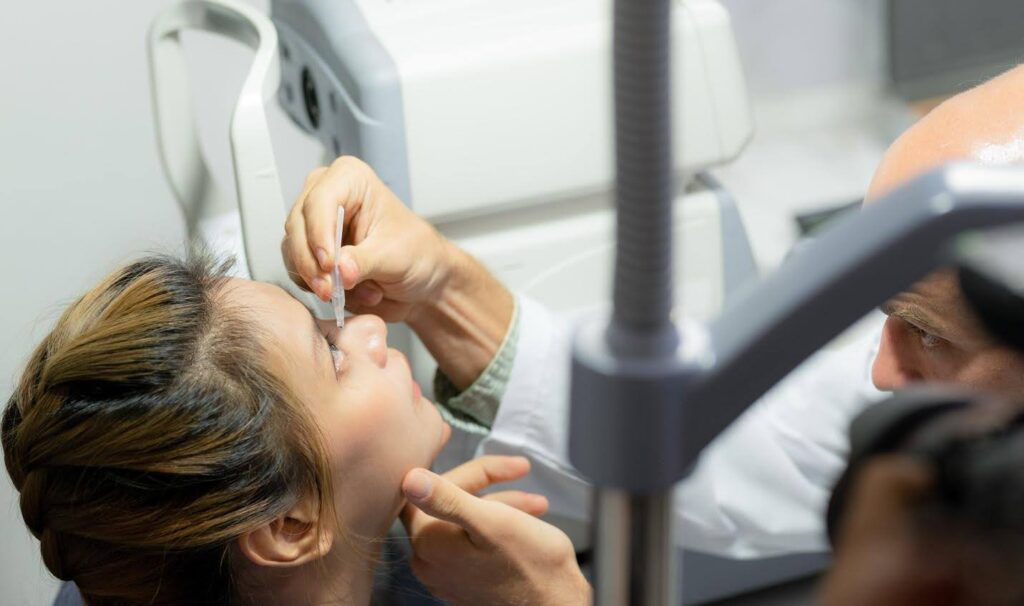Recognizing and Treating the Symptoms of Dry Eye Disease


When understanding how dry eye works, we first have to look at how tears are made.
Tears are a complex mixture of mucus, water and oils and the ratio of these 3 layers can vary from day to day. Mucin is produced by the conjunctival cells, the oils are released from the meibomian glands found in the eyelids and the lacrimal gland produces the water component. Our eyes constantly monitor their environment. When they detect something that might be harmful, like wind, smoke, a foreign object, or an emotional trigger, they send a signal to the brain. The brain processes this signal and sends a message to the lacrimal glands, which are located above the outer corner of each eye. The lacrimal glands respond by increasing production of tears.
Why are tears so important?
- Lubrication: They create a moist environment on the surface of the eye, preventing dryness and irritation.
- Protection: They help wash away foreign particles and debris, protecting the eye from infection.
- Nutrition: Tears contain nutrients that nourish the cornea, the clear outer layer of the eye.
- Emotional Expression: Tears play a role in human emotion, allowing us to express sadness, joy, and other feelings.
Fun fact: In addition to properly functioning tear production, did you know your nutrition also impacts your eye health? It’s true!
What is dry eye disease?
When the eyes don’t produce enough tears or when the tears evaporate too quickly, it can lead to dry eye disease. This condition can cause a variety of uncomfortable symptoms. While the symptoms of DES can vary from person to person, some of the most common include:
- Burning or stinging sensation
- Dry, gritty feeling
- Redness
- Blurry vision
- Sensitivity to light
- Difficulty wearing contact lenses
- Excessive tearing (yes, sometimes too much tearing can be a sign of dry eyes!)
If you think you might have dry eye, take our dry eye quiz. It’s free and only takes a few minutes! After you get your results, book a thorough dry eye assessment in Calgary at Carrington Optometry.

What can cause dry eye?
Dry eye can be caused by a few factors that vary person to person. Common causes of dry eye include:
- Age. As we get older, our tear production naturally decreases.
- Medication. Certain medications, such as antihistamines, antidepressants, and decongestants, can reduce tear production.
- Environmental factors. Dry air, wind, and exposure to smoke or pollutants can irritate the eyes and lead to dryness. This is especially an issue in Calgary, where it’s very dry!
- Medical conditions. Conditions such as arthritis, diabetes, and Sjogren’s syndrome can affect tear production.
- Contact lens wear. Extended wear or improper care of contact lenses can contribute to dry eyes.
Our Calgary Optometrist can help you learn how to properly and safely use your contact lenses to decrease your risk of dry eye. Call us to learn more!
What do I do if I have dry eye?
While there’s no cure for dry eye disease, early intervention is important. Our Carrington Optometrists have a few suggestions to help alleviate symptoms and improve comfort.
- Artificial tears: Artificial tears can be used to supplement tear production and lubricate the eyes. Check out some of our favorites here.
- Lid hygiene: Gently cleaning your eyelids can help remove debris and reduce inflammation.
- Humidifiers: Using a humidifier can help add moisture to the air, especially during dry seasons.
- Avoiding irritants: Limit exposure to smoke, wind, and other irritants that can worsen dry eyes. Wearing properly fitted glasses can make a big difference.
- Computer breaks: Taking regular breaks from screen time can help reduce eye strain and dryness.
- Omega-3 fatty acids: A diet rich in omega-3 fatty acids, found in fish and flaxseeds, may help improve tear quality. A good quality Omega 3 is key like Forma-I and Lumecca Treatments to target the source of inflammation.
- Prescription eye drops: In severe cases, we may prescribe prescription eye drops to help manage dry eye symptoms.
If you struggle with dry eye at work, you may benefit from Alberta’s Eyesafe™ program, which provides prescription safety glasses for workers. Talk to your employer to find out what your workplace offers, and learn more about how Carrington Optometry can help.

How do I manage dry eye?
In addition to our above suggestions for dry eye pain relief, it’s always important to do a few extra things:
- Book yourself in for an Advanced Dry Eye Assessment. Specific testing for dry eye allows personalized care which is important for management.
- Wear your prescribed glasses. Especially if you work in front of computer screens all day. With less strain on your eyes, the easier dry eye is to manage.
- Wear polarized sunglasses. Calgary is bright all year round. Polarized sunglasses cut down on glare when driving or working outdoors, reducing strain on your eyes.
- Have your frames properly fitted. It’s important to have your frames properly fitted to your face. This may involve occasional touch-ups by your optician as time and use can loosen or warp your fit.
Dry eye syndrome is manageable and we’re here to help. To get relief from dry eye syndrome in Calgary, book with us today at Carrington Optometry!
